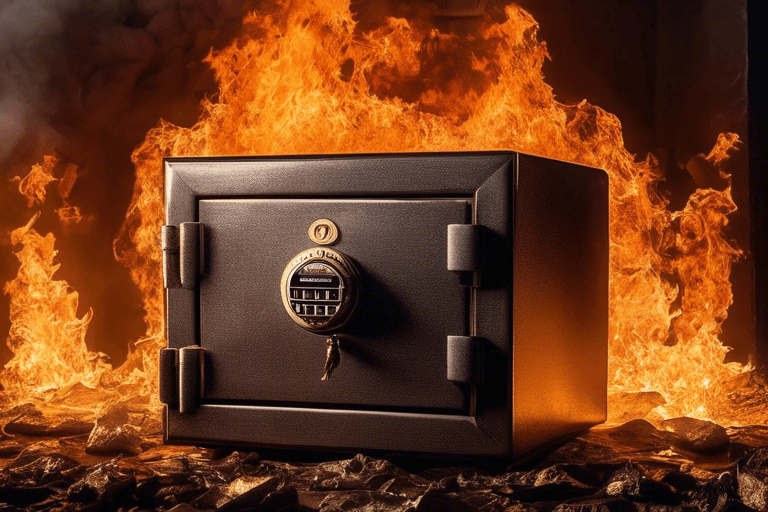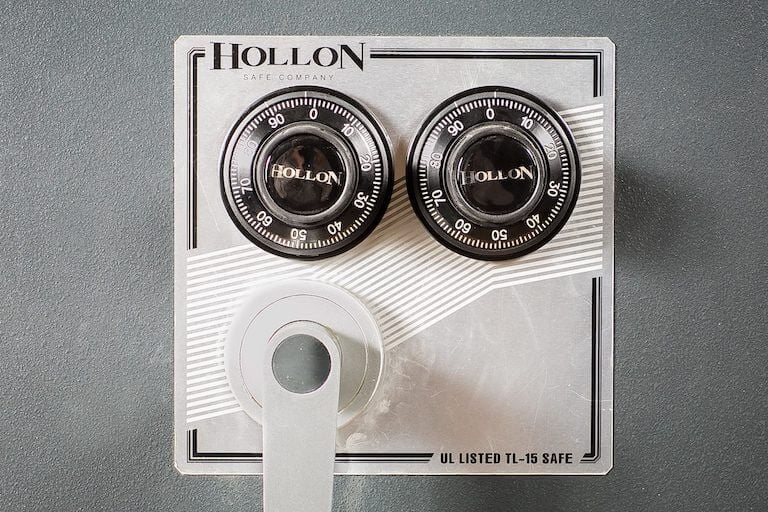
Are All Safes Fireproof?
When it comes to protecting our valuable items and documents, safes are often the go-to solution. We rely on them to keep our belongings safe from burglaries, but what about fires?
In this guide, we will explore the truth behind fireproof safes and the factors that impact their performance.
Understanding Fire Protection in Safes
Are All Safes Fireproof?
Unfortunately, no. Many people assume that all safes are protected against fire, just like they are protected against theft. However, this assumption is not entirely accurate.
While many home safes may offer some level of protection against fire due to the composition of their walls and any insulating materials they may contain, their fire resistance is limited both in terms of duration and temperature.
It's crucial to understand that different safes can have significant variations in their fire protection, even if they share the same certified level of burglary protection.
The Importance of Fire Protection
Fire protection is often overlooked compared to theft protection, especially when considering the increasing use of cloud storage for digital files. However, the reality is that physical documents and items can still hold immense value, as well as physical cash.
In the event of a fire, these physical assets can be lost forever, leading to severe consequences for people and businesses.
The Vulnerability of Digital Media
While digital storage has become more prevalent, it's important to remember that the original information often needs to be physically stored in a data cabinet.
Fireproof safes are designed for different types of media and offer specific temperature thresholds for protection. For example, safes for paper documents and cash must ensure the internal temperature remains below 350°F (176°C) to prevent them charing or bursting into flames, while safes for data media such as CDs or memory sticks have even lower temperature thresholds, typically 125°F (52°C), to prevent them from being damaged.
The Limitations of Fire Safes
The Reality of Fire Resistance
Despite the term "fireproof" commonly used to describe safes, it's crucial to understand that no safe is entirely fireproof.
Instead, safes are designed to be fire-resistant, meaning they can withstand fire for a certain period and maintain a temperature below a specific threshold.
The length of fire resistance and the maximum temperature a safe can endure depend on various factors, including the materials used and the construction of the safe.
Fire Testing and Certifications
To determine the fire resistance of a safe, manufacturers conduct rigorous fire testing. However, it's important to note that not all fire testing is created equal.
The two most stringent and globally recognized certifications are the European standard EN 1047-1 and the American UL Standard 72. These certifications ensure that the safe has undergone testing in a furnace, replicating the temperatures experienced during a typical office fire.
The interior temperature of a certified fire safe must remain below 350°F (176°C) for paper documents, and below 125°F (52°C) for digital media for a given length of time, ranging from 30 minutes to more than 2 hours.
Factors Affecting Fire Protection
Construction and Materials
The construction and materials used in a safe play a crucial role in its fire resistance. Safes with multiple layers of fire-board and thicker gauge steel offer better protection against fire.
The layers of fire-board act as insulation, absorbing heat and keeping the internal temperature of the safe lower for a longer period.
Additionally, a well-sealed door with a smoke and fire seal enhances the safe's fire resistance.
Duration and Intensity of the Fire
The duration and intensity of a fire greatly impact the performance of a fire safe. If a fire burns hot enough and for a long enough time, even the most robust fire-resistant safe can be destroyed.
However, it's important to note that most fires burn out quickly without additional water or firefighting measures.
Therefore, choosing a fire safe with an appropriate fire rating based on the response time of local fire departments and the potential duration of a fire is crucial for optimal protection.
Selecting the Right Fire Safe for Your Needs
Assessing Your Fire Protection Requirements
To determine the right fire safe for your needs, you must assess your specific fire protection requirements.
Factors to consider include your location, proximity to fire departments, potential response time, and the value of the items you wish to protect.
Consulting with your local fire department can provide valuable insights and recommendations regarding the required fire rating for your safe.
Investing in Higher Fire Ratings
While basic fire safes may provide sufficient fire protection for some individuals, investing in higher fire ratings can offer enhanced peace of mind and protection.
Safes with longer fire ratings, such as two hours, provide extended protection during a fire and increase the chances of preserving valuable documents and items.
It's important to weigh the cost of the safe against the potential loss you may incur in the event of a fire.
Balancing Fire and Burglary Protection
When selecting a safe, it's essential to find a balance between fire and burglary protection.
While fire resistance is crucial, it's also important to consider the level of burglary protection provided by the safe.
Look for safes that offer both fire and burglary certifications, along with convenient but robust lock options, to ensure comprehensive protection for your valuable items.
So, Are "Fireproof" Safes Really Fireproof?
In conclusion, not all safes are fireproof, but they can be fire-resistant. Understanding the limitations and factors that affect fire protection in safes is crucial when selecting the right safe for your needs.
Fire-resistant safes undergo rigorous testing and certification to ensure they can withstand specific temperatures and durations. By investing in a fire safe with an appropriate fire rating and considering factors such as construction, materials, and the potential duration of a fire, you can provide optimal protection for your valuable items and documents ahead of time.
Remember, safes are a silent insurance policy that safeguard your belongings during worst-case scenarios. By prioritizing fire protection alongside burglary protection, you can ensure the safety and security of your assets, giving you peace of mind even in the face of potential fire hazards.



